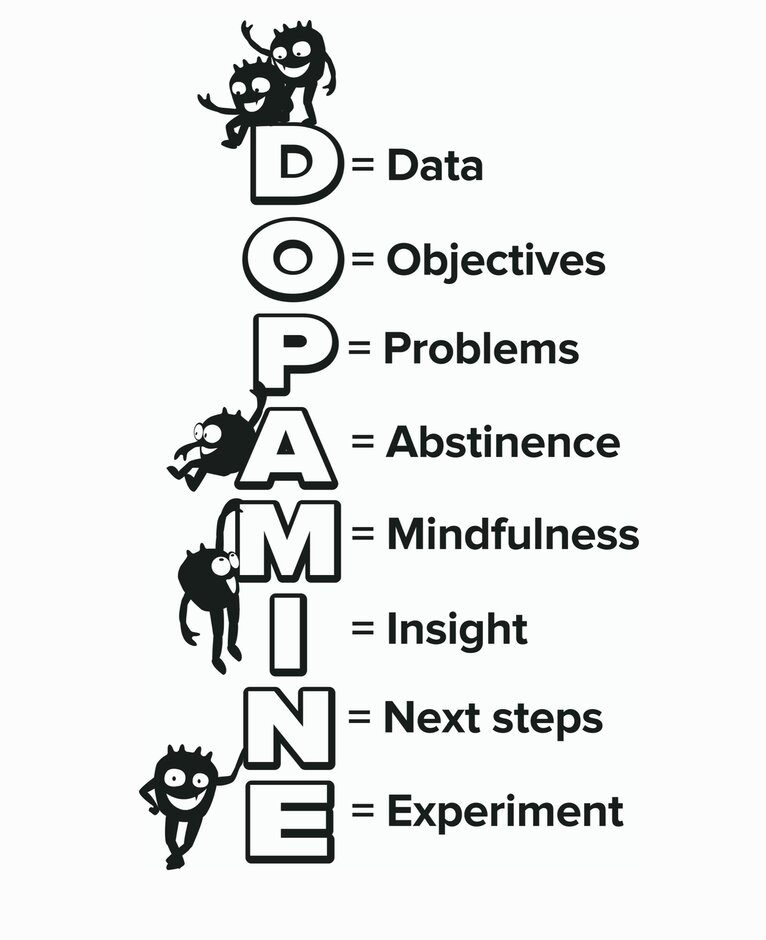In her 2021 book, Dopamine Nation: Finding Balance in the Age of Indulgence, author and psychiatrist Dr. Anna Lembke, delve into the neuroscience of reward with an emphasis on the neurotransmitter: Dopamine. Dr. Lembke shared true stories of her patients and their journey of recovery from addiction. She also shared a framework that helps the reader better understand Dopamine and strategies for recovering from addiction. The framework is based on the Acronym DOPAMINE.
D Stands for Data
- Gather facts about consumption.
O Stands for Objectives – Objectives for using.
Even seemingly irrational behavior is rooted in some personal logic. People use high-dopamine substances and behaviors for all kinds of reasons: to have fun, to fit in, to relieve boredom, to manage fear, anger, anxiety, insomnia, depression, inattention, pain, social phobia . . . the list goes on.
P Stands for Problems – problems related to use.
High-dopamine drugs always lead to problems. Health problems. Relationship problems. Moral problems. If not right away, then eventually. Most of us are unable to see the full extent of the consequences of our drug use while we’re still using. High-dopamine substances and behaviors cloud our ability to accurately assess cause and effect.
A Stands for Abstinence
Abstinence is necessary to restore homeostasis, and with it our ability to get pleasure from less potent rewards, as well as see the true cause and effect between our substance use and the way we’re feeling. To put it in terms of the pleasure-pain balance, fasting from dopamine allows sufficient time for the gremlins to hop off the balance and for the balance to go back to the level position.
Mindfulness is simply the ability to observe what our brain is doing while it’s doing it, without judgment.
M Stands for Mindfulness
Mindfulness practices are especially important in the early days of abstinence. Many of us use high-dopamine substances and behaviors to distract ourselves from our own thoughts. When we first stop using dopamine to escape, those painful thoughts, emotions, and sensations come crashing down on us.
The trick is to stop running away from painful emotions, and instead allow ourselves to tolerate them. When we’re able to do this, our experience takes on a new and unexpectedly rich texture. The pain is still there, but somehow transformed, seeming to encompass a vast landscape of communal suffering, rather than being wholly our own.
I Stands for Insight
N Stands for Next Steps
E Stands for Experiment
This is where patients go back out into the world armed with a new dopamine set point (a level pleasure-pain balance) and a plan for how to maintain it. Further, as digital drugs like smartphones have become embedded into so many aspects of our lives, figuring out how to moderate their consumption, for ourselves and our children, has become a matter of urgency.
All the Best in your Quest to get better. Don’t Settle: Live with Passion.

Comments are closed.